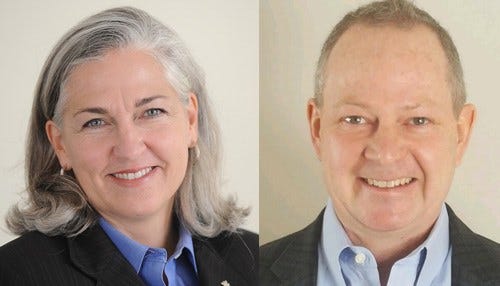Indiana Must Navigate the Talent Valley of Death

Subscriber Benefit
As a subscriber you can listen to articles at work, in the car, or while you work out. Subscribe NowThe Valley of Death is a much-suffered phenomenon in the financing of early-stage, science-based startups: ideas too late for basic research funding but too early for venture or industrial financing. Less talked about, but just as real and painful, is the related Talent Valley of Death. Critical to the viability of such early-stage ventures is attracting a founding CEO who can articulate a compelling and fundable vision for the concept.
But the difficulty of finding such talent and connecting it to promising early-stage ventures is as frequent a failure point as early financing. Innovation geography obeys cluster economics. Startups, venture backers, entrepreneurs, skilled workers, service providers and acquirers co-locate around a small number of ZIP codes. This creates deep labor markets for skilled workers, ready availability of expertise and resources, and collective learning. The ability to conceive and execute startup concepts is significantly enhanced, and the perceived and actual risk is proportionately lowered.
But what if you are outside of an innovation cluster? The geographical dispersion of basic research funds to research universities does not overlay innovation clusters. Indeed, many — if not most — inventions arising from basic research are born outside of them. They are geographically marooned: potentially exciting and viable in the right hands, but much less likely even to get to the starting line.
The lens of executive search is a particularly instructive one with which to look at this founding CEO challenge. To power an effective search, 200 candidates who meet the spec might be approached; 20 might be qualified, interested and available; and five might be interviewed to result in one successful hire. For a particular early-stage science startup, such a search in Chicago or Indianapolis might yield two qualified candidates. In Boston or San Francisco, there could readily be 200; there is at least a two-order-of-magnitude difference in talent density.
It’s not practical to use executive search for university startups. Among other factors, there is no money. But it speaks to a feature of the Valley of Death: the need for expensive resources when they are least likely to be available. And it helps quantify just how underpowered the talent search is in this situation, even if there is money and bandwidth for it.
What is the cost of this geographical mismatch? We’d warrant hundreds, if not thousands, of lost projects and startups; lives not saved or improved; swaths of wasted research dollars, effort and talent; lost opportunity; and lost economic value.
Small improvements could make a big difference. According to a 2017 survey, basic research funding into North American universities — including some $35 billion per year of combined NIH and NSF extramural funding — yields about 25,000 inventions per year, 16,000 patent applications and 1,000 startups. Currently enough invention "baby turtles" hatch on the beach and make it to the water to keep the innovation economy humming. But the number unnecessarily eaten by the "seagulls" of distance and isolation from resources is, we’d observe from experience, shockingly high.
What are those of us outside of innovation clusters to do? Funds and talent are attracted to critical masses of invention and opportunity: well-curated, well-articulated and accessible. So …
- Let’s create that well-curated professional resource in Indiana to introduce the life science executive talent in our region, or interested in our region, to opportunities here.
- Let’s build on the networking efforts of BioCrossroads, IU Ventures, Elevate Ventures’ and Purdue’s EIR programs, Notre Dame’s IDEA Center and Indiana Biosciences Research Institute’s new mentor platform, AIM, to take this to the next level.
- Let’s build on the lessons of the Academic Venture Exchange and do it even better for the benefit of Indiana.
Join us in this effort so that the next time a life science star executive retires early or sells his or her company and is ready to start thinking of their next venture, the "go to" is clear.
Alan Thomas is a Partner at Heritage Partners International and founding CEO of the Academic Venture Exchange. Teri Willey is an executive director of IU Ventures and the fund manager for the Indiana University Philanthropic Venture Fund.
